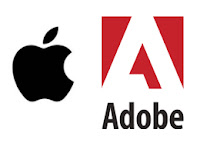Today, Apple revised its iPhone Developer Program License Agreement to effectively ban the use of the Flash-to-iPhone converter.
Throughout 2010, Steve Jobs and Apple made it very clear that they do not like Adobe. At all. They prominently left Flash off the iPad, instead promoting HTML5 at every opportunity.
For some time now, though, Adobe’s had a tool to circumvent Apple’s ban on Flash for the iPhone and iPad: the Adobe Creative Suite 5 Flash-to-iPhone converter, which would have allowed developers to create apps in Flash and then port them over into iPhone.
The new change to the iPhone Developer Program License Agreement, which comes as part of the release of the new iPhone OS SDK for developers, changes all that. Originally section 3.3.1 was only a sentence long, but now it has gained several more.
Here’s the new wording of the policy in question:
“3.3.1 — Applications may only use Documented APIs in the manner prescribed by Apple and must not use or call any private APIs. Applications must be originally written in Objective-C, C, C++, or JavaScript as executed by the iPhone OS WebKit engine, and only code written in C, C++, and Objective-C may compile and directly link against the Documented APIs (e.g., Applications that link to Documented APIs through an intermediary translation or compatibility layer or tool are prohibited).”
As Daring Fireball’s John Gruber points out, the new language almost certainly means that cross-compilers are banned — you have to build iPhone apps within Apple’s pre-approved programming languages or watch your app be denied access to Apple’s app stores.
Given Apple’s history with Adobe, it’s very likely that this change was a direct assault on Adobe, whose CS5 suite prominently advertises the Flash-to-iPhone compiler as a feature. By neutering it, Apple deals another blow to Flash. It’s also a major setback for any developers that were building iPhone apps with Flash as a backbone — they almost certainly have to start from square one.
